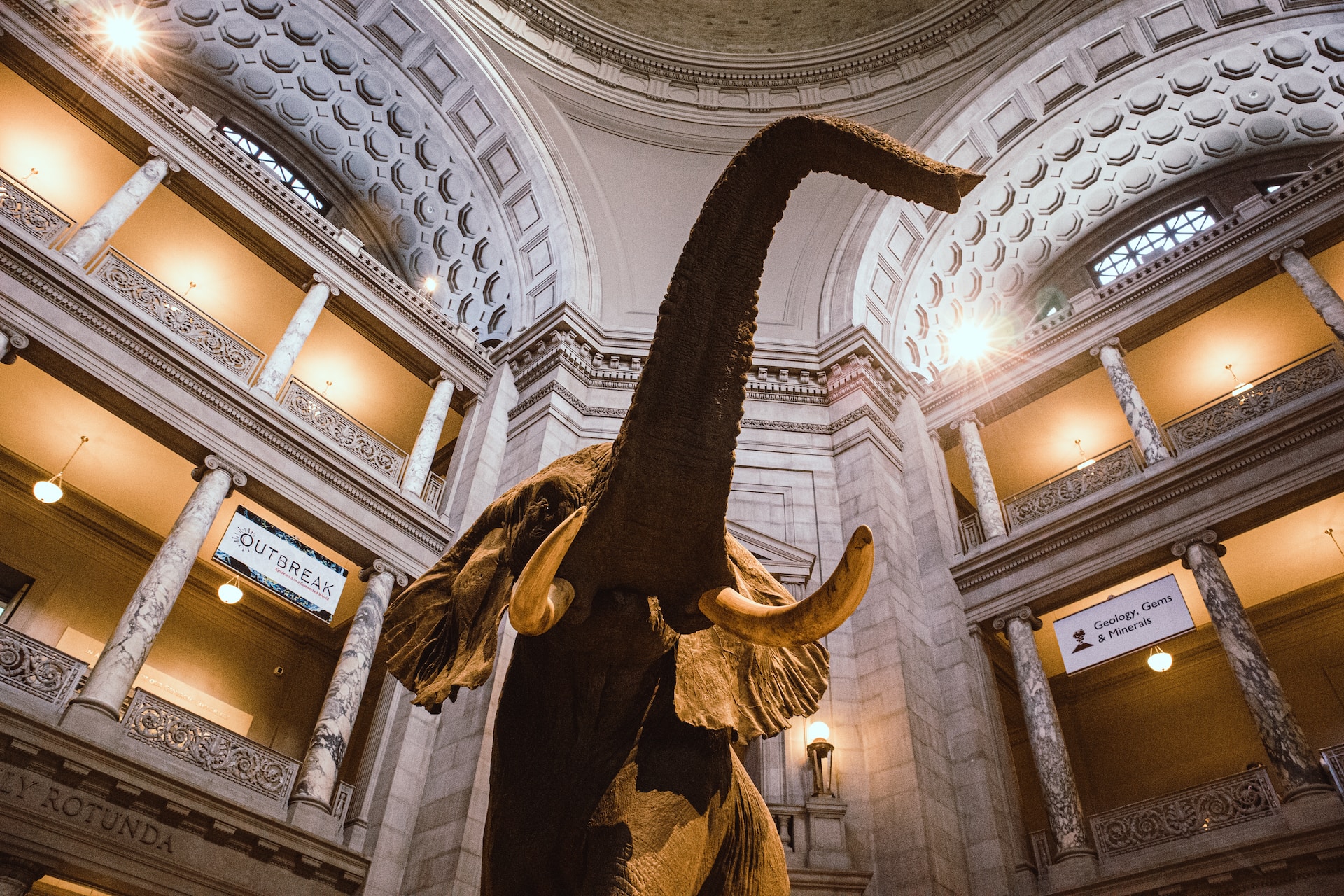Museums of natural history are a great way to learn about the earth’s diverse ecosystems and the life that inhabits them. These institutions house some of the most fascinating and unique specimens in the world, and provide an unparalleled educational experience for visitors of all ages. The United States is home to many world-class museums of natural history, and here we will take a look at the 10 best of them.
1. The American Museum of Natural History, New York City
The American Museum of Natural History, located in New York City, is one of the most visited natural history museums in the world. The museum’s collection includes over 32 million specimens, including the famous Blue Whale and the Rose Center for Earth and Space. Visitors can also take a walk through the Butterfly Conservatory, and view live animals in the Hall of Biodiversity. The museum’s mission is to discover, interpret, and disseminate—through scientific research and education—knowledge about human cultures, the natural world, and the universe.
This #EntoMonday, meet the Atlas moth! With a wingspan of ~10.6 in (27 cm), this giant is one of the world's largest insects. As a caterpillar, it spends nearly all its time eating. But adults have non-functioning mouthparts & cannot feed—resulting in a lifespan of only 2 weeks. pic.twitter.com/dqa1ewAa3Y
— American Museum of Natural History (@AMNH) June 12, 2023
2. The Smithsonian National Museum of Natural History, Washington D.C.
The Smithsonian National Museum of Natural History, located in Washington D.C., is one of the largest natural history museums in the world, and its collection includes over 126 million specimens. The museum’s exhibits cover a wide range of topics, from prehistoric life to modern ecology. Visitors can also experience the Butterfly Habitat and the Butterfly Pavilion, and explore the Hall of Human Origins. The National Museum of Natural History is dedicated to inspiring curiosity, discovery, and learning about the natural world through its unparalleled research, collections, exhibitions, and education outreach programs.
3. The Field Museum, Chicago
The Field Museum, located in Chicago, is one of the largest natural history museums in the world and is home to over 30 million specimens. The museum’s collection includes the famous T-Rex skeleton, Sue, and the world’s largest collection of ancient Egyptian artifacts. Visitors can also experience the Butterfly Haven, and take a journey through the Hall of Jades and the Hall of Gems and Minerals. The Field Museum’s mission is to inspire curiosity and understanding of the natural world and its place in the human experience.
4. The California Academy of Sciences, San Francisco
The California Academy of Sciences, located in San Francisco, is one of the most unique natural history museums in the world, and it includes a planetarium, an aquarium, and a natural history museum all under one roof. Visitors can explore the four-story rainforest, the coral reef, and the African Hall, and also see live animals and plants in the aquarium. The California Academy of Sciences is a research institution dedicated to exploring, explaining, and sustaining life on Earth.
5. The Natural History Museum of Los Angeles County
The Natural History Museum of Los Angeles County, has one of the most diverse collections of natural history specimens in the world, and it includes over 35 million specimens. The museum’s exhibits cover a wide range of topics, from the dinosaurs to the human origins. Visitors can also experience the Butterfly Pavilion, and take a journey through the Hall of Birds and the Hall of Mammals. The Natural History Museum of Los Angeles County is dedicated to the study and understanding of the natural world, and its mission is to inspire wonder, discovery, and responsibility for our natural and cultural worlds.
6. The Denver Museum of Nature & Science
The Denver Museum of Nature & Science, is one of the most visited natural history museums in the United States, and it has over 1 million specimens. The museum’s exhibits cover a wide range of topics, from prehistoric life to modern ecology. Visitors can also experience the Butterfly Habitat, and take a journey through the Hall of Life and the Hall of Gems and Minerals. The Denver Museum of Nature & Science is dedicated to educating the public about the natural world through exhibitions, programs, and scientific research.
📣 Heads up! 📣
Coors Gems & Minerals Hall will be closed June 6-8 for deep cleaning and maintenance. pic.twitter.com/vqJC4WpXOj
— Denver Museum (@DenverMuseumNS) June 4, 2023
7. The National Museum of Natural History, Smithsonian Institution
The National Museum of Natural History, Smithsonian Institution, is one of the largest natural history museums in the world, and it has over 126 million specimens. The museum’s exhibits cover a wide range of topics, from prehistoric life to modern ecology. Visitors can also experience the Butterfly Habitat, and take a journey through the Hall of Human Origins. The Smithsonian National Museum of Natural History is dedicated to understanding the natural world and our place in it through scientific research, education, and exhibitions.
8. The Houston Museum of Natural Science
This museum is one of the most visited natural history museums in the United States, and it has over 2 million specimens. The museum’s exhibits cover a wide range of topics, from prehistoric life to modern ecology. Visitors can also experience the Butterfly Habitat, and take a journey through the Hall of Life and the Hall of Gems and Minerals.
9.The Academy of Natural Sciences of Drexel University, Philadelphia
The Academy of Natural Sciences of Drexel University, located in Philadelphia, is a research institution and natural history museum that focuses on the study of biodiversity and environmental science. The museum’s collection includes over 17 million specimens and artifacts, including a world-renowned collection of fossils, insects, and birds. Visitors can also experience the live butterfly exhibit, and take a journey through the Dinosaur Hall and the Environmental Center. The Academy also offers a variety of educational programs for visitors of all ages. The Academy of Natural Sciences of Drexel University is dedicated to advancing research, education, and public engagement in the natural and environmental sciences, and its mission is to promote the understanding and appreciation of the natural world through the discovery and dissemination of knowledge.
Have you ever seen a Bald Eagle egg? This egg in our Ornithology collection was collected in 1896 "after a hard climb"! #GoBirds #FlyEaglesFly #BaldEagle pic.twitter.com/pd6DjoPrHv
— Academy of Natural Sciences (@AcadNatSci) February 10, 2023
10. The Peabody Museum of Natural History, Yale University, New Haven, Connecticut.
The Peabody Museum of Natural History, located at Yale University in New Haven, Connecticut, is a world-renowned institution that houses over 13 million specimens and artifacts. The museum’s collection includes a wide range of specimens, including fossils, minerals, and cultural objects from around the world. Visitors can also experience the live Butterfly exhibit, and take a journey through the Dinosaurs, the Hall of Minerals, Earth and Science, and the Hall of Native American Cultures. The Peabody Museum also offers a variety of educational programs for visitors of all ages. The Peabody Museum of Natural History is dedicated to advancing scientific understanding of the natural world through research, education, and public engagement and its mission is to preserve and study the natural and cultural world, and to inspire in all a respect for the ongoing beauty and diversity of life on Earth.
Featured Image: Photo by Alejandro Barba on Unsplash







